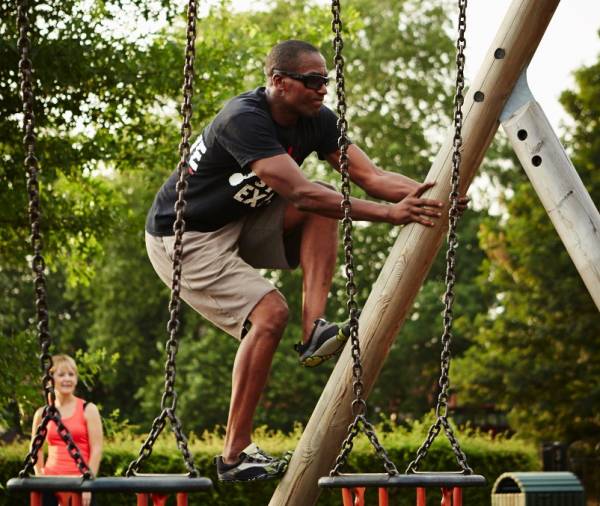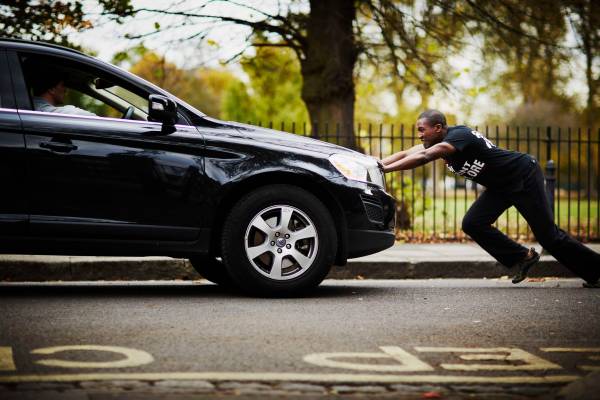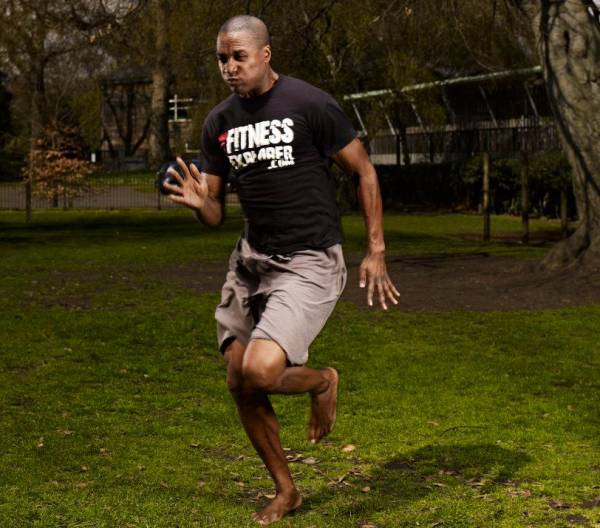Do you know that high levels of activity alone do not cancel out the effects of sitting down for several hours a day? What can we do about this?
Doing Little Often
While the benefits of physical activity have long been recognised, the modern environment encourages us to pursue a lifestyle of inactivity. Humans are lured by gadgets, transport options, labour-saving devices, and technological solutions, all of which have led us down the path of reduced movement.
“We are designed to be movement generalists, multi-skilled and multi-faceted, rather than specialists in one or two areas.“
The ACSM (American College of Sports Medicine) proposes reducing sedentariness for all, regardless of your physical activity level. This can be achieved by interspersing intervals of standing with short bouts of physical activity between periods of time spent sedentary.2
In other words, doing little often and sitting less can be more healthful than one significant movement effort at the end of the day.
Me finding movement opportunities using my everyday surroundings.
We Are Designed to Be Movement Generalists
Most exercise programmes focus on a few specialised areas. We may concentrate on a particular skill or movement alone, to the detriment of others. For example, we may just focus on doing some cardio or just resistance work.
These approaches have one fundamental flaw – they ignore our ancestral heritage and nature’s prescription for adaptation that got us here. The human genome was not framed around enduring recreational ultra-endurance marathons or exclusively heavy lifting an object repeatedly in order to develop fitness.
Through natural selection, we thrived on a broad repertoire of activity and intensity. We are designed to be movement generalists, multi-skilled and multi-faceted, rather than specialists in one or two areas. Our training should reflect this.
“These approaches have one fundamental flaw – they ignore our ancestral heritage and nature’s prescription for adaptation that got us here.”
The types of exercise for which we are evolutionarily adapted include a variety of activities performed intermittently, at moderate intensities, for reasonable durations. This variety not only improves our physical capability, but also lowers the occurrence of repetitive stress injury, provides inherent motivation, and increases the likelihood for long-term adherence to exercise programmes.
7 Tips to Get Yourself Paleo Fit
One clear solution is to get back to basics and reference the movement patterns of our hunter-gatherer ancestors. They were naturally lean and strong, based on the activities they had to do daily. Follow this approach to move as nature intended. Train above and beyond basic function. Be ready to meet any challenges life throws at you.4
Here are seven tips to reach back to your roots and get yourself paleo fit:
1. Get Outdoors
Fresh air, grass, trees, and colours in the natural environment have a profound impact on mental health and physical well-being. A study at the University of Queensland, Australia, found that those who exercised outdoors on a regular basis had higher levels of serotonin, a hormone that regulates mood, than those who exercised indoors. They also had higher levels of endorphins, the post-exercise rush that occurs after exercise.3
Science even has a term for this: biophilia. It means love of life and refers to the love we have for the natural world. Most of us feel this instinctively, but evidence for biophilia demonstrates that exposure to and interaction with nature has a profound effect on mental performance, self-awareness, vitality, appreciation of our environment, and the appreciation of those around us.

Me enjoying some play time outdoors.
Being outside is also associated with higher levels of vitamin D, thanks to additional sun exposure. This has significant health benefits, including boosting the immune system, improving heart health, improving calcium absorption and bone health, and preventing cancer.
2. Be Playful
Make activities fun as well as challenging. Use your imagination to create scenarios that will make workouts more interesting. For example, when doing a bear crawl, imagine you’re crawling under low-hanging branches covered in thorns at varying heights. It sounds like child’s play, but engaging the brain in this fashion will increase muscle activation and make you work harder.
“Begin to explore and expand the possibilities that you have to move.”
Scientific studies demonstrate that visualisation brings about quantifiable improvements as well as physiological changes.7 Research has also shown that using mental imagery for muscle movement can create similar electrical activity as that seen during actual movement.8 Imagination also helps to increase motivation and allows us to create whatever environment we need to accomplish our goals.
3. Be Practical
Think of fitness as the ability to improve what you need to do day to day, as well as the capacity to complete the extraordinary tasks that life sends our way. Make your fitness not just functional, but practical, too.
What does your fitness allow you to do? Are you strong enough to push a car or would you rather wait for help? Quick enough to sprint for a bus or would you just wait for the next one? Would you be able to climb to a position of safety or would you succumb to danger?

Are you strong enough to push a car or would you rather wait for help?
4. Integrative Movement
Don’t feel that your training needs to be conducted at a particular time or place. Integrating physical activity into your daily routine will reduce the need to fall back on the lack-of-time excuse.
Avoid segregating or isolating movement from your day-to-day life. Instead, make physical activity something you do all the time by avoiding sedentary options. It doesn’t mean you have to dedicate all your time to movement. Begin to explore and expand the possibilities that you have to move.
Take the stairs rather than the lift. Sprint for the bus. Walk to the local grocery store and carry several bags of shopping back. Stand up when talking on the phone. Take movement snacks – brief periods of opportunistic whole-body movement a couple of times an hour – to get you out of the chair.
“Integrating physical activity into your daily routine will reduce the need to fall back on the lack-of-time excuse.”
5. Sleep More
Just a few nights of sleep deprivation can increase the levels of hormones that boost appetite and reduce your ability to register when you are full. A lack of sleep increases the stress hormone cortisol and increases the risk of lifestyle diseases such as type 2 diabetes, heart disease, and high blood pressure. Minimal sleep also promotes the storage of fat, especially around the midsection.
Aim for a daily minimum of eight to nine hours of restful sleep. Ensure you find time for relaxation and rest for full recovery after physical exertion. Don’t let your training regimen get in the way of your sleep.
6. Be Mindful
How often have you exercised aimlessly and mindlessly, without paying attention to what, how, or why you are doing? Instead, focus on the experience of the moment and create a mind-body connection with everything you do. Move with intensity and purpose as our ancestors did. Think less about exercise prescription. Dwell on your own, individual movement philosophy.

Move with intensity and purpose as our ancestors did.
7. Overkill
Regular exercise is protective against chronic disease. However, extended periods of intense exercise can be detrimental. We were designed for routine, light-intensity activity, such as walking and carrying for several miles. We were also designed for intermittent, moderate-intensity and moderate-duration activity with brief periods of vigorous, high-intensity activity. Extended periods of high-intensity exercise are associated with damage to the heart, joints, and muscle.5,6
“The solution is to replicate natural movement patterns in a natural environment as best as practically possible.”
Summary
Moving in vastly different patterns from those to which we are genetically adapted causes a significant proportion of the health issues we encounter today. The solution is to replicate natural movement patterns in a natural environment as best as practically possible. Doing so will promote long-term health, quality of life, and survival.
In summary, focus on movement not muscles, be practical and don’t stop at basic function, prioritise activity more than exercise, and seek health above performance.
Check out these related articles:
- Making the Most of Your Movement Environment
- Become a Badass Athlete: How to Incorporate Natural Movement
- Movement Drills to Improve Your Hip Performance
- What’s New on Pulse Beat Fit UK Today
References
1. Schmid D et al., “Television Viewing and Time Spent Sedentary in Relation to Cancer Risk: A Meta-Analysis“, JNCI J Natl Cancer Inst (2014)
2. Garber CE et al., “American College of Sports Medicine position stand. Quantity and quality of exercise for developing and maintaining cardiorespiratory, musculoskeletal, and neuromotor fitness in apparently healthy adults: guidance for prescribing exercise.” Med Sci Sports Exerc. 2011
3. Coon JT et al., “Does Participating in Physical Activity in Outdoor Natural Environments Have a Greater Effect on Physical and Mental Wellbeing than Physical Activity Indoors? A Systematic Review.” Environmental Science & Technology, 2011
4. O’Keefe JH et al., “Achieving hunter-gatherer fitness in the 21st century: back to the future.” Am J Med 2010
5. Jassal DS et al., “Cardiac injury markers in nonelite marathon runners.” Int J Sports Med 2009
6. Middleton N et al., “Altered left ventricular diastolic filling following a marathon is a reproducible phenomenon.“ Int J Cardiol. 2007 Oct 31;122(1):87-9. Epub 2007 Jan 11.
7. Champaign IL, Advances in Sport Psychology, Human Kinetics, 2002
8. Champaign IL, Motor Control and Learning, Human Kinetics, 1999






